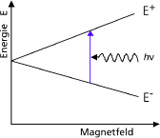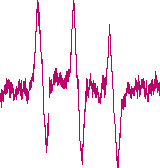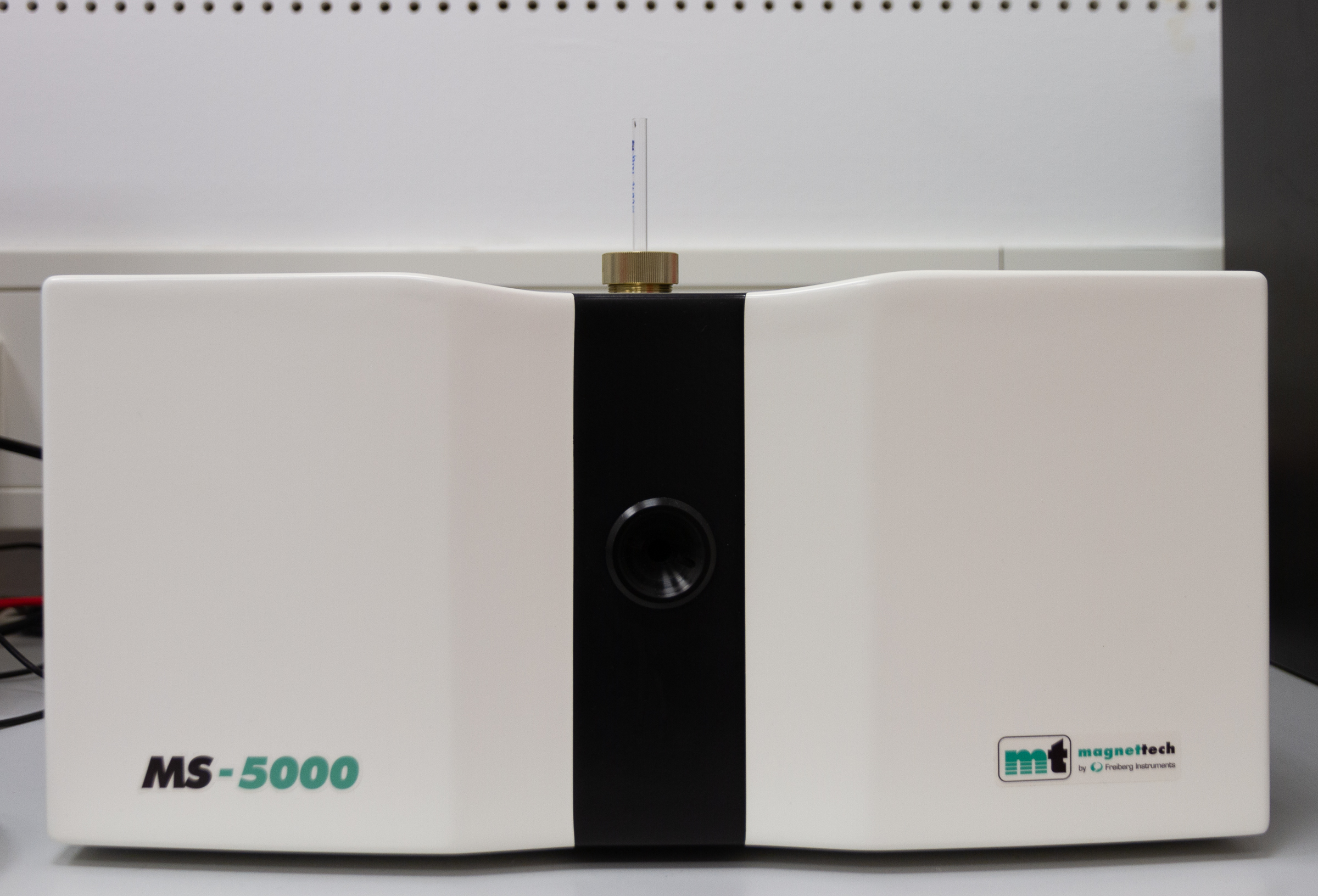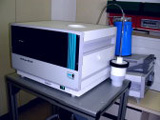Radicals are characterized by unpaired electrons and thus by a spin (±1/2), which in turn is associated with a magnetic moment. In a magnetic field, the energy of the electron depends on whether it is aligned parallel or antiparallel to the magnetic field (so-called Zeeman splitting, see diagram). If the sample is exposed to microwave radiation whose quantum energy corresponds to the Zeeman splitting, resonant absorption occurs.
The local magnetic field in which a radical is located results from an external field applied to the sample, and from the magnetic field of the nuclei of the neighboring atoms whose spin is not equal to 0, such as N14. Therefore, the chemical environment of the ESR-active species (i.e., the radicals) can be inferred from the ESR spectra: similar to NMR.
Practically, the sample is placed in a microwave resonator that is in a uniform magnetic field. The MW frequency is kept constant, and the magnetic field is scanned over a certain range. During this process, the MW absorption is measured.
Particular advantages of this method include its high sensitivity and the ease of measuring the absolute number of spins in the sample.
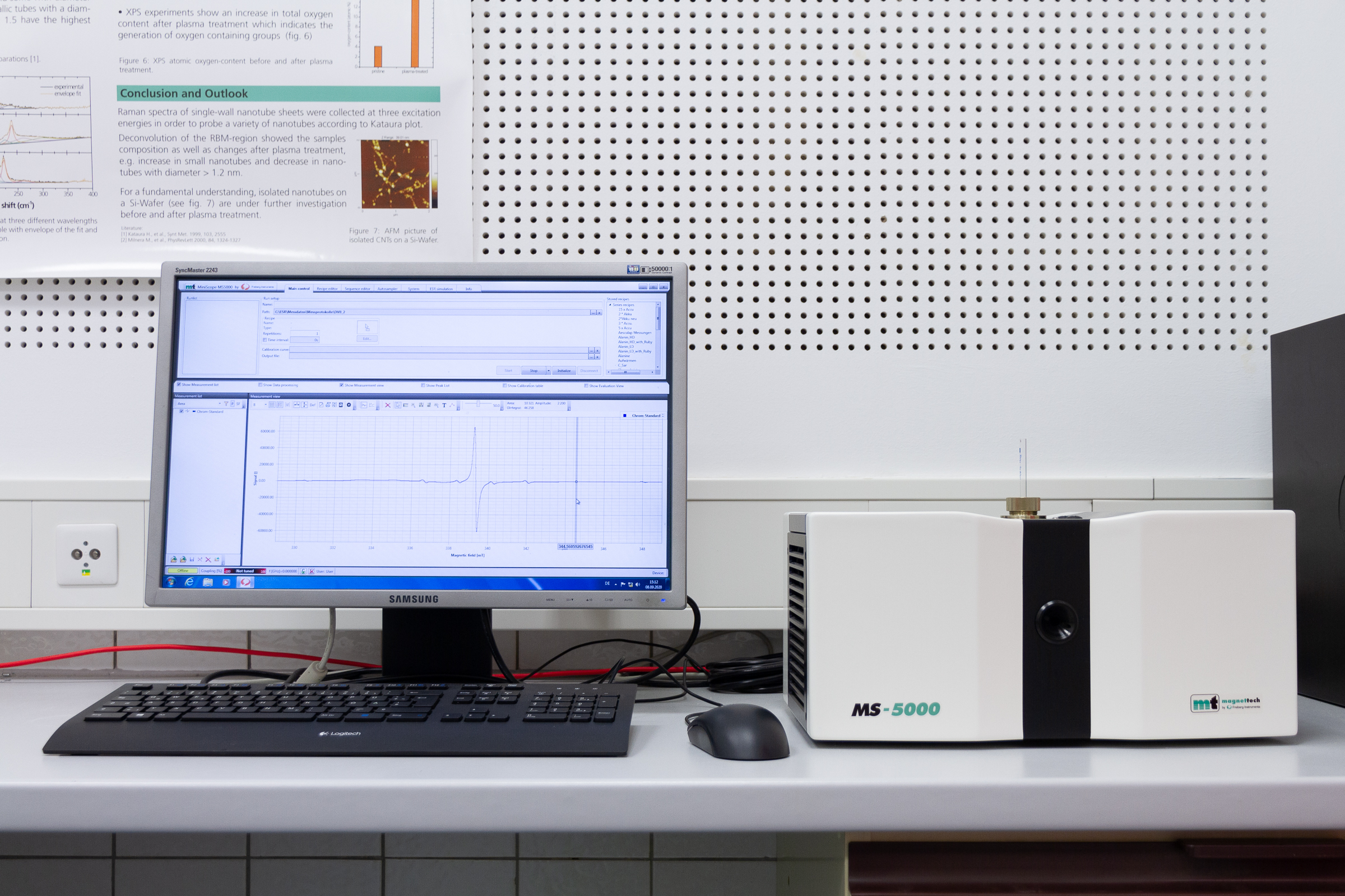
 Fraunhofer Institute for Interfacial Engineering and Biotechnology IGB
Fraunhofer Institute for Interfacial Engineering and Biotechnology IGB